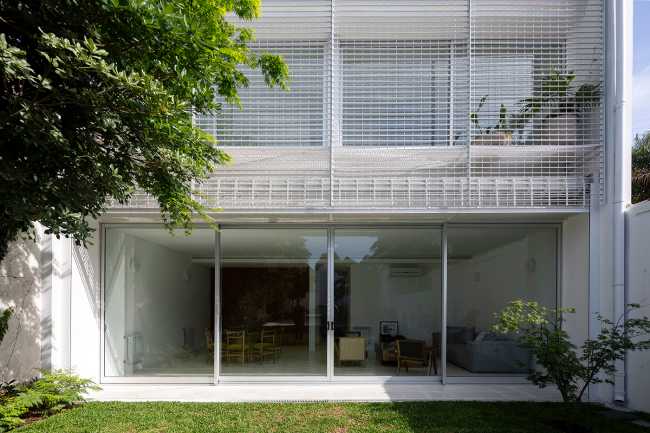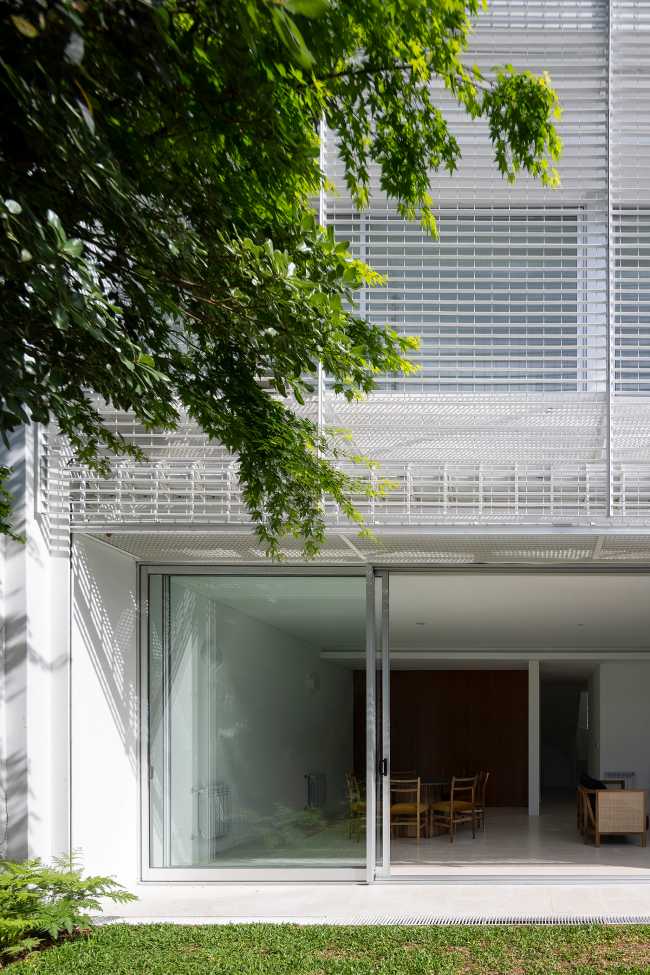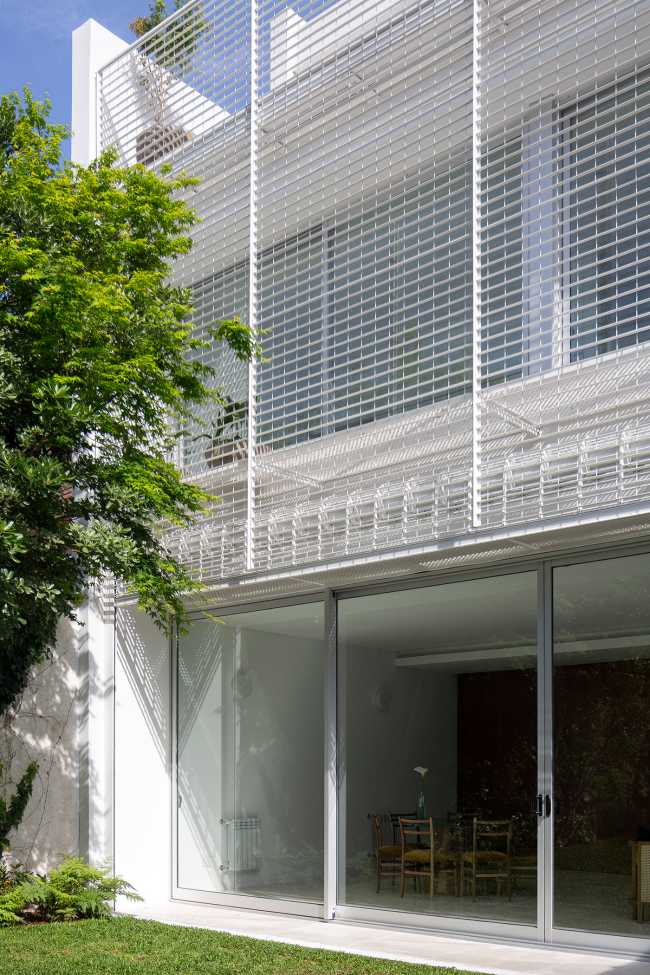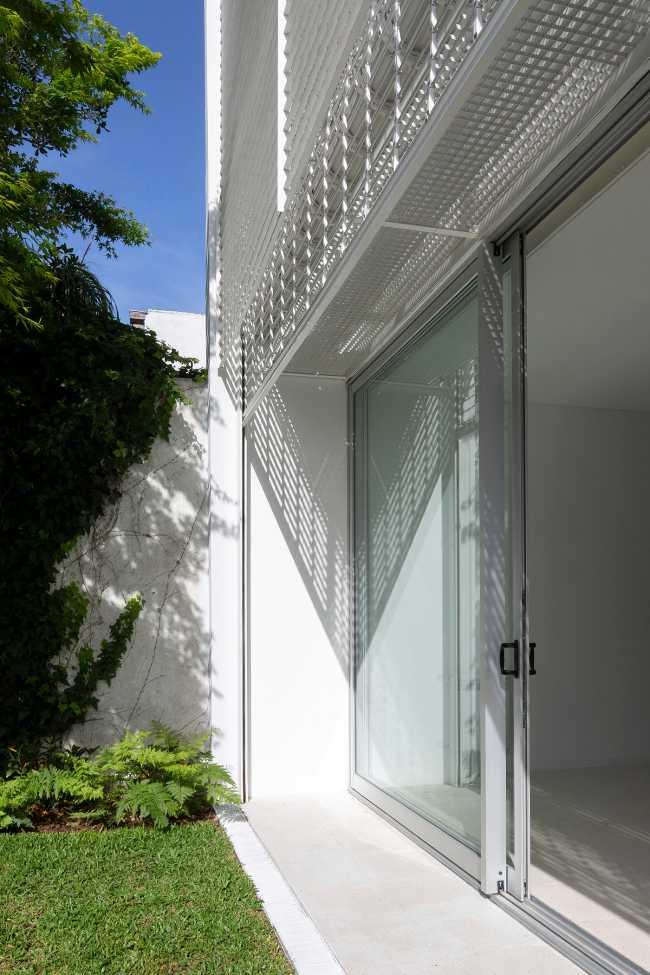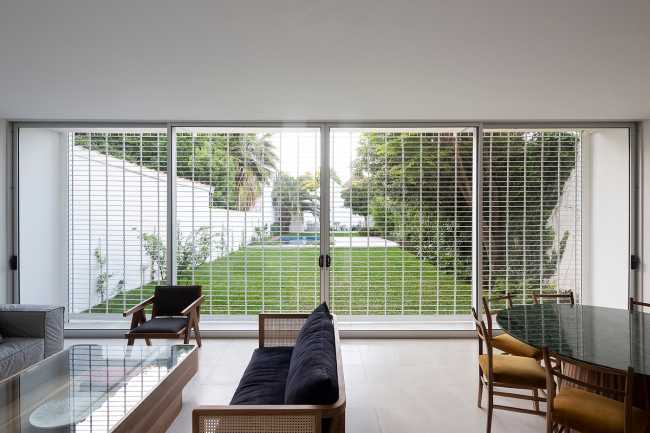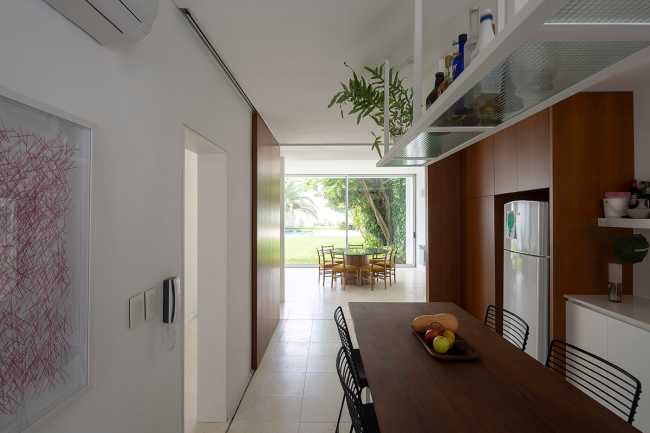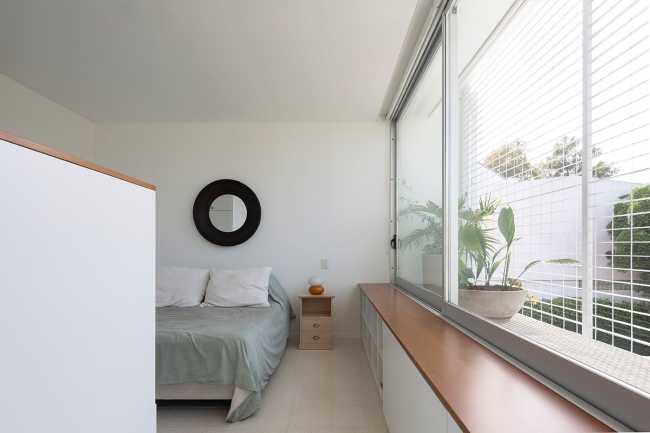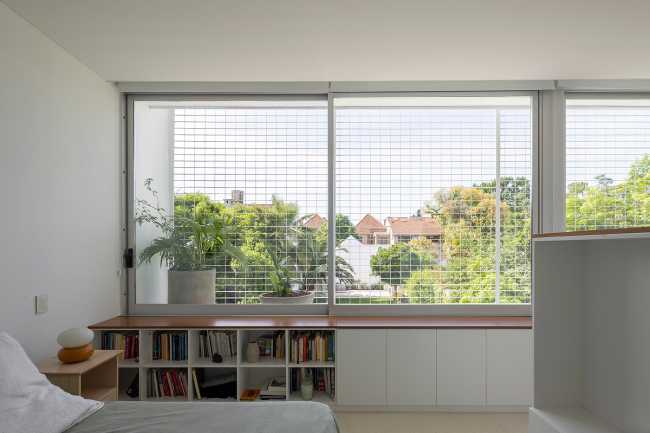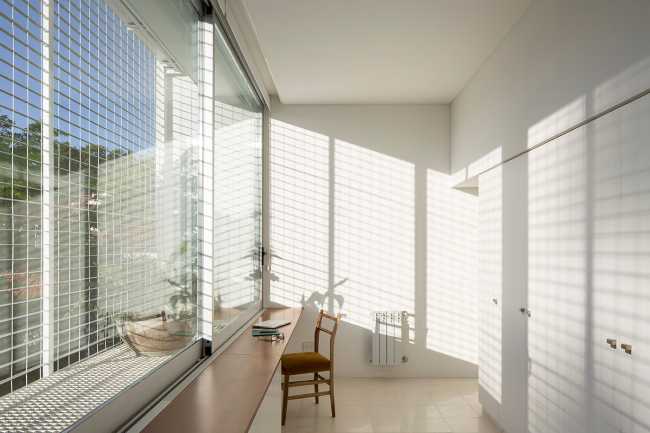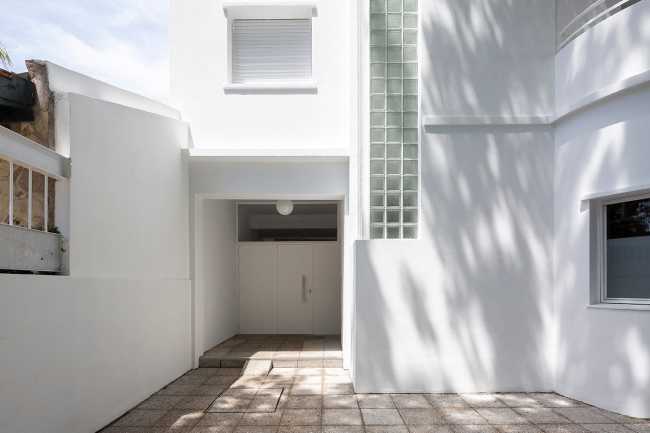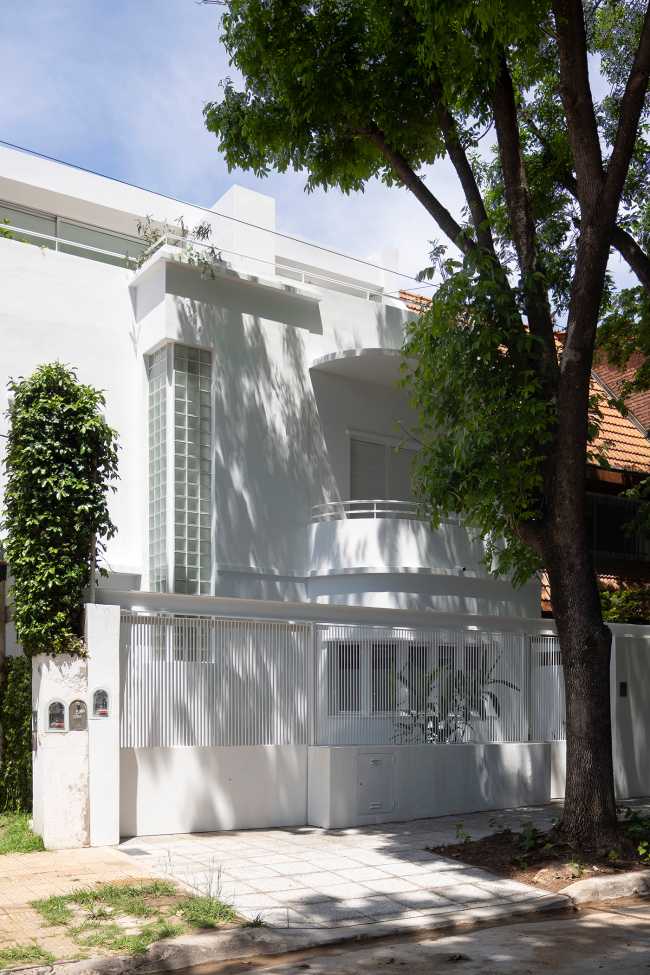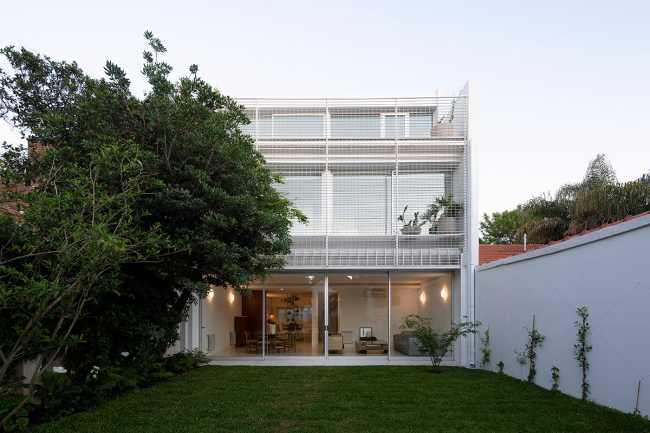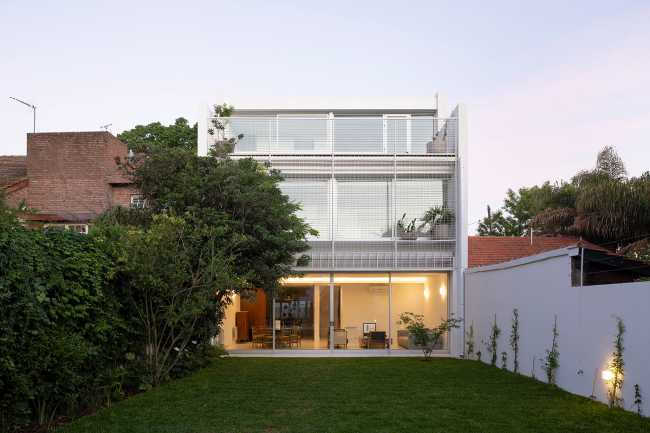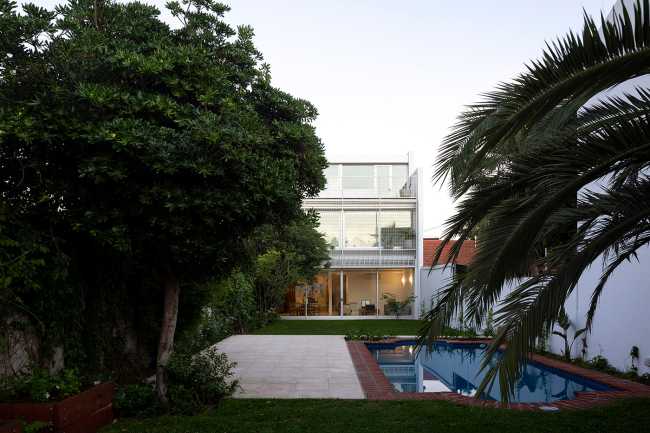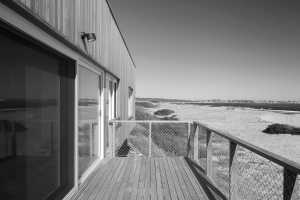JI House makes room for a more flexible and contemporary way of living: Colle-Croce sets out to reinterpret the spirit of early 20th century structural rationalism, exploring the idea that the structure could create a space without the need for decoration
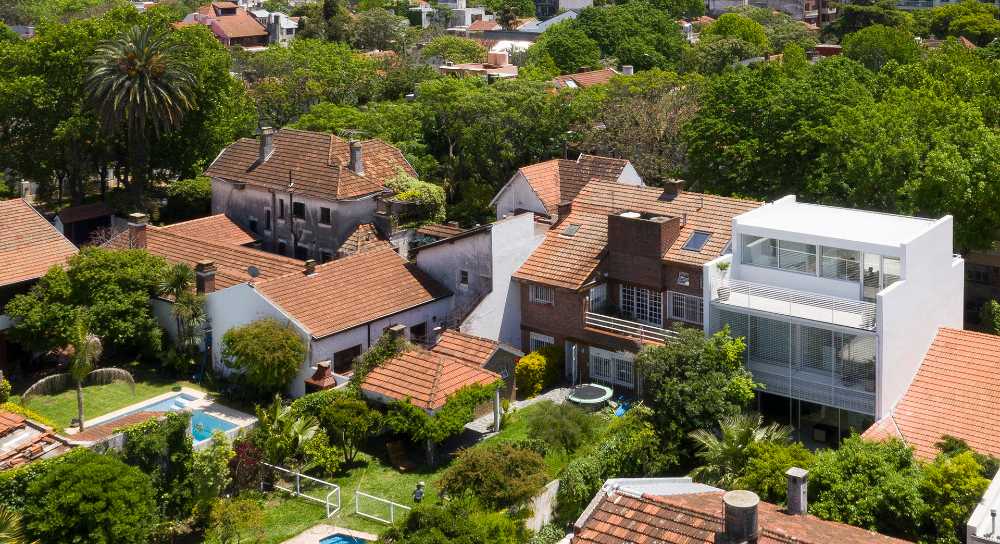

Lightness and freshness of JI House emerge from the Argentine architectural scene of the 1920s
The renovation and extension of JI House, located in a residential district in the north of the city of Buenos Aires, La Lucila, brings to light a rationalist and bainque language, a synthesis of local appropriation of modern European orthodoxy
- #America
- #Argentine
- #Building recovery
- #Habitation
- #Restyling
- #Architectures
- #Architecture
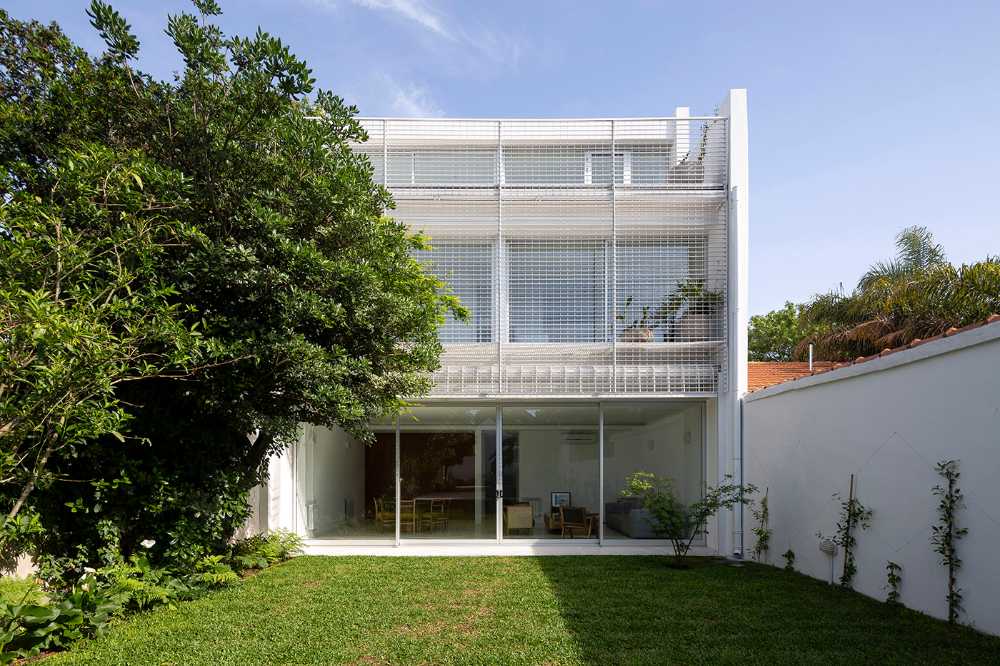
The intervention promotes a direct relationship with the main space of the house, the garden and other spaces. A series of experiences accompany the user through a walk from the pavement. A patio with semi-covered spaces accompanied by new vegetation opens the way to a semi-covered space of generous proportions.
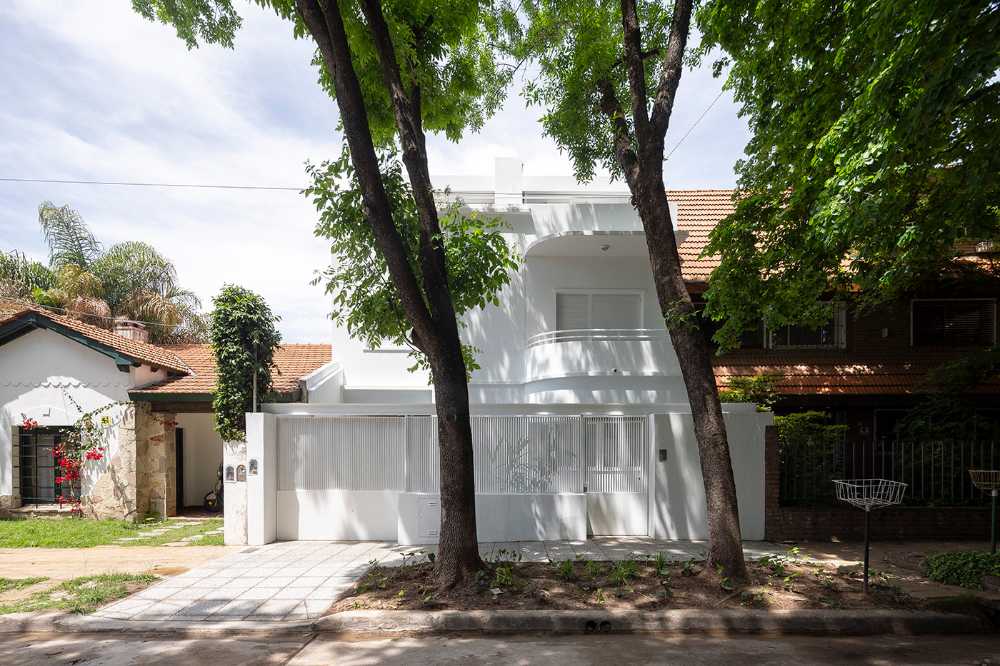
The living and dining room space occupies the entire width of the plot, establishing a direct relationship with the garden thanks to huge sliding windows with numerous possibilities for opening from one side to the other. The kitchen occupies the space that was once the living space
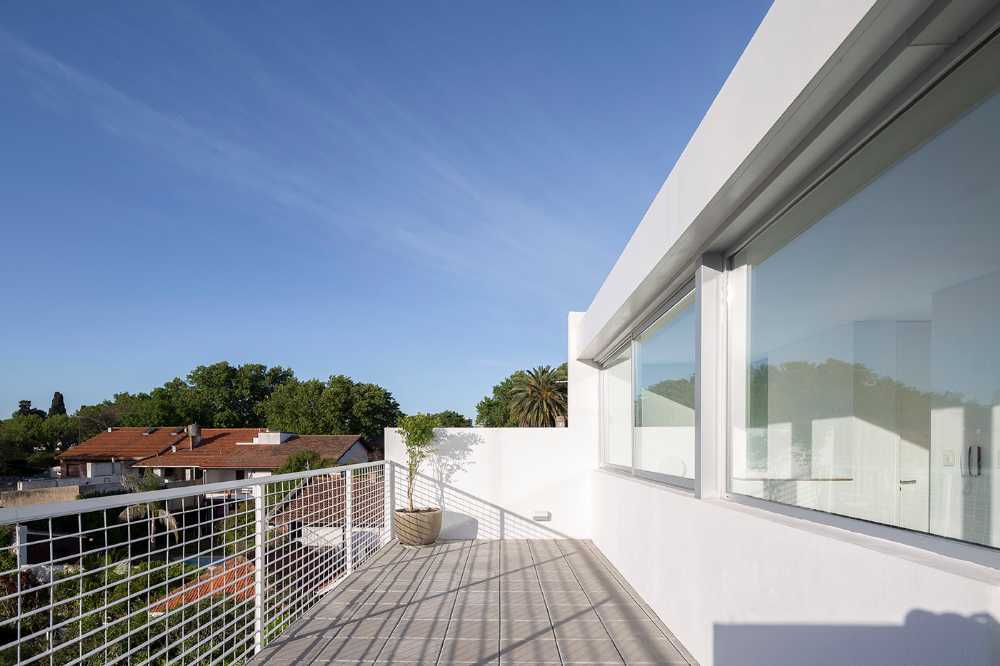
Upstairs, the two children's bedrooms and the bathroom belong to the original structure, and the master bedroom has a completely independent character. This new space embraces long views of the garden and its surroundings through a horizontal wall-to-wall window
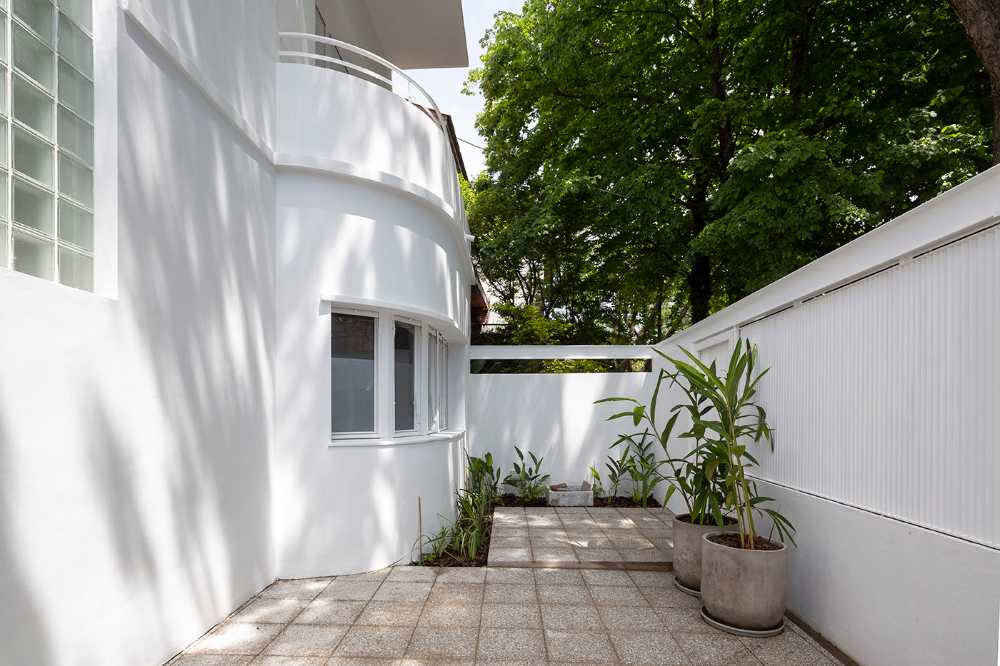
Gallery
Photo credits
Top image, content and gallery images: Javier Agustín Rojas


